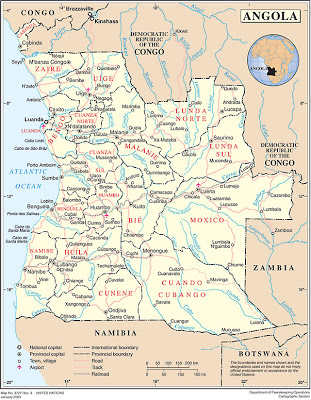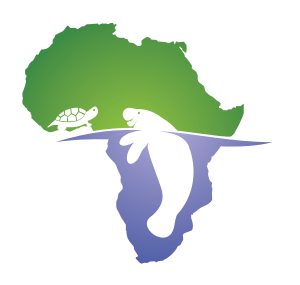Just over a year ago my colleague Howard Rosenbaum at WCS asked me to join a project they were proposing: cetacean, manatee and sea turtle surveys in northern Angola. After numerous proposal drafts, Skype conference calls and a scoping trip to the site last November by Tim and Angela, this week the contract has finally been signed. It’s funded by Angola Liquid Natural Gas (ALNG), a consortium of oil companies that are building a transfer station (oil transferred there from offshore wells) at Soyo (see top left corner of Angola map below). It will be a very different project from my manatee work in Gabon. The challenge will be working with an oil company to do the best thing for the wildlife, but it’s a step in the right direction that they have asked for these surveys.

Below is a Google view of Soyo and the Sereia Peninsula (on left). I’ll be mostly working in the rivers that you see in the middle of the photo. Angola has emerged from years of war and very little wildlife work has been done there. To the best of my knowledge, the Soyo area has never been surveyed for manatees, other than a very brief survey by non-manatee biologists contracted by ALNG a few years ago. Angola is the southern limit of the West African manatees’ range. We already know Olive Ridley sea turtles nest at the site, since they were documented there last season. And humpback whales migrate by offshore on their way to Antarctic feeding grounds. Tim hopes to find Humpback Dolphins there as well (another very rare species).
Angola has emerged from years of war and very little wildlife work has been done there. To the best of my knowledge, the Soyo area has never been surveyed for manatees, other than a very brief survey by non-manatee biologists contracted by ALNG a few years ago. Angola is the southern limit of the West African manatees’ range. We already know Olive Ridley sea turtles nest at the site, since they were documented there last season. And humpback whales migrate by offshore on their way to Antarctic feeding grounds. Tim hopes to find Humpback Dolphins there as well (another very rare species).
A dead manatee washed up at the site a couple months ago and the staff documented it with photos and collected measurements and a genetic sample. Unfortunately the staff biologist, Warren, was away at the time so the carcass wasn’t saved. This is disappointing for several reasons (I know the non-biologists are wondering how NOT keeping a carcass could ever be disappointing in any way!). But, West African manatees are so rare, that any carcass is a a treasure of information. This one was of particular interest for 2 reasons: it had propeller scars which are common on manatees in the US but rare (as far as we know) in Africa, and from the pictures the female carcass appeared to be pregnant. I hope there aren’t more carcasses in the future, but at least we now know manatees are present in the area.
 Photo courtesy of Angola LNG.
Photo courtesy of Angola LNG.

 Angola has emerged from years of war and very little wildlife work has been done there. To the best of my knowledge, the Soyo area has never been surveyed for manatees, other than a very brief survey by non-manatee biologists contracted by ALNG a few years ago. Angola is the southern limit of the West African manatees’ range. We already know Olive Ridley sea turtles nest at the site, since they were documented there last season. And humpback whales migrate by offshore on their way to Antarctic feeding grounds. Tim hopes to find Humpback Dolphins there as well (another very rare species).
Angola has emerged from years of war and very little wildlife work has been done there. To the best of my knowledge, the Soyo area has never been surveyed for manatees, other than a very brief survey by non-manatee biologists contracted by ALNG a few years ago. Angola is the southern limit of the West African manatees’ range. We already know Olive Ridley sea turtles nest at the site, since they were documented there last season. And humpback whales migrate by offshore on their way to Antarctic feeding grounds. Tim hopes to find Humpback Dolphins there as well (another very rare species). Photo courtesy of Angola LNG.
Photo courtesy of Angola LNG. 
